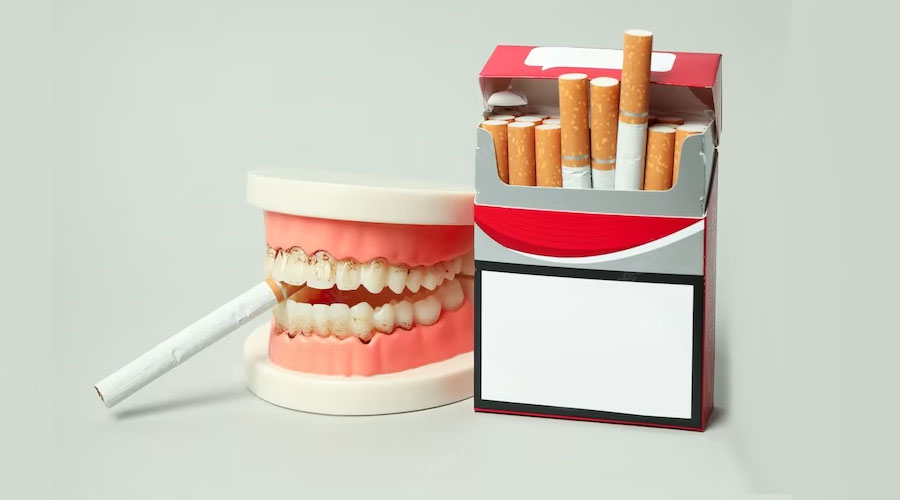The infection in the gum leads to Gum disease. It can affect the structure of bone that supports your teeth. It can also lead to tooth fall in severe cases. Research says smoking is a prime cause of severe gum disease in the United States of America.
Gum disease starts when bacteria develop on your teeth and get below your gums. If this bacteria or germs stay on your teeth for a longer time then layers of tartar and plaque are formed. This buildup causes gum disease also known as gingivitis.
If your gum disease gets worse, your gums can start pulling away from your teeth and form infected spaces. This is called periodontitis which is a severe gum disease. The tissue and bone which provides support to your teeth can break down. This could loosen your teeth and you will have to pull it out.
Symptoms of Gum Disease:
- Tender and bleeding gums
- Red swollen gums
- Loose teeth
- Pain while chewing
- Teeth sensitivity
- Gums that have pulled away from your teeth
Relation of Smoking with Gum Disease:
Smoking has several ill-effects on your body. Gum disease is one of those. It weakens your body’s immune system making it harder to fight a gum infection. Once your gums are damaged, smoking makes the condition worse for your gums to heal. If you are a regular smoker you should be aware of the following consequences:
- Compared to non smokers, you have twice the risk for gum disease
- Your risk of gum disease increases if you are chain smoker
- It becomes difficult to treat smokers who have gum disease
- Use of tobacco in any form, be it cigarettes or pipes or plain tobacco causes gum disease
How to prevent Gum Disease:
You can avoid dental disease by taking the following measures:
- Brush your teeth twice daily
- Floss regularly to remove plaque.
- Visit a dental hygienist for regular check ups
- Stop smoking
How to treat Gum Disease:
If the Gum infection is more severe then you could follow this:
- Deep cleaning should be done below the gum line
- Use the prescribed medication or mouth rinse
- Tartar present deep under the gums should be removed by surgery.
- To fill places where bone is lost, your dentist may move tissue from one place in your mouth to wrap the exposed tooth roots.
If you smoke or consume tobacco, quitting it will help in the long run and prevent your teeth from future damage. Also make sure to visit your dentist often.





